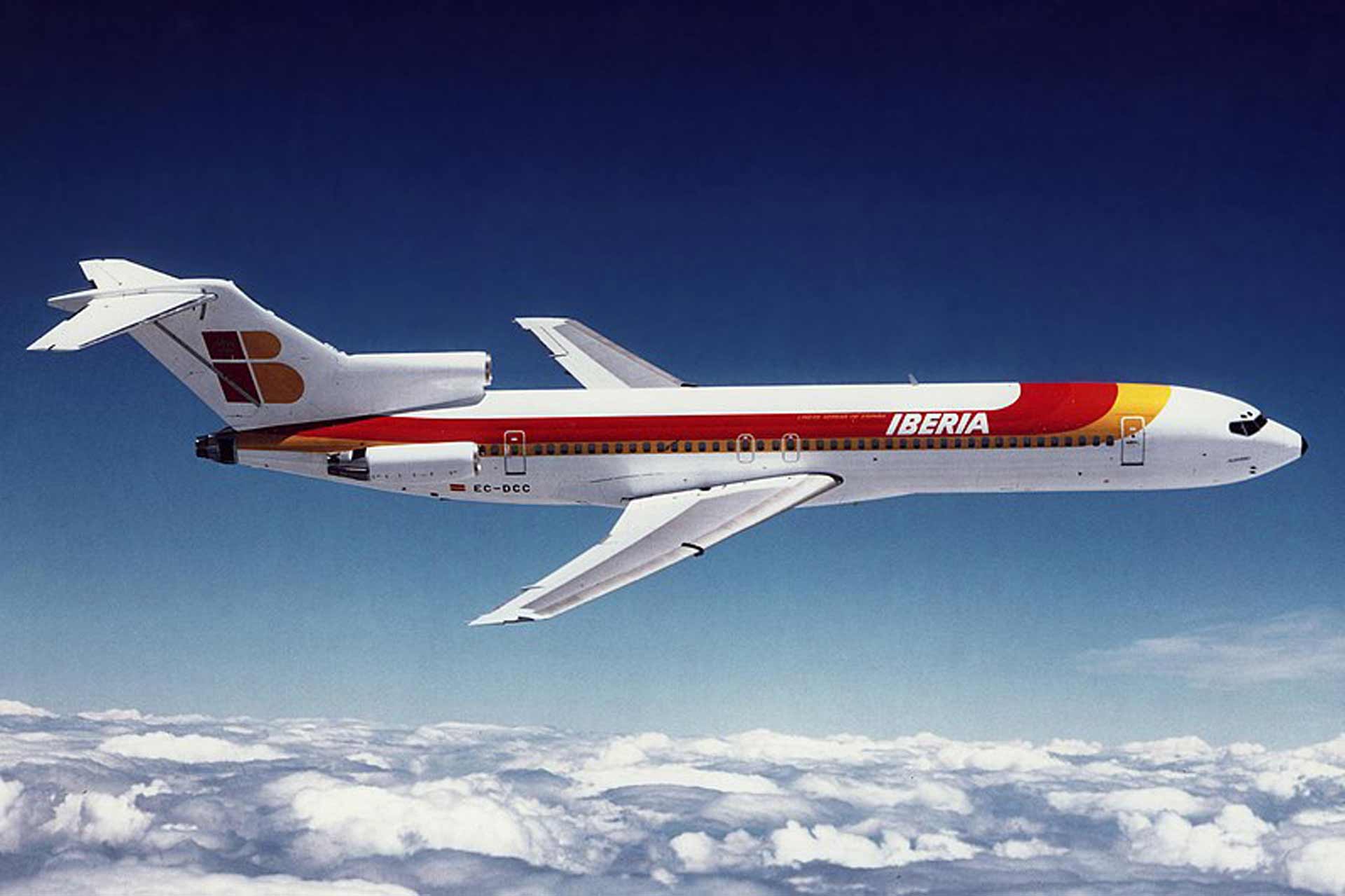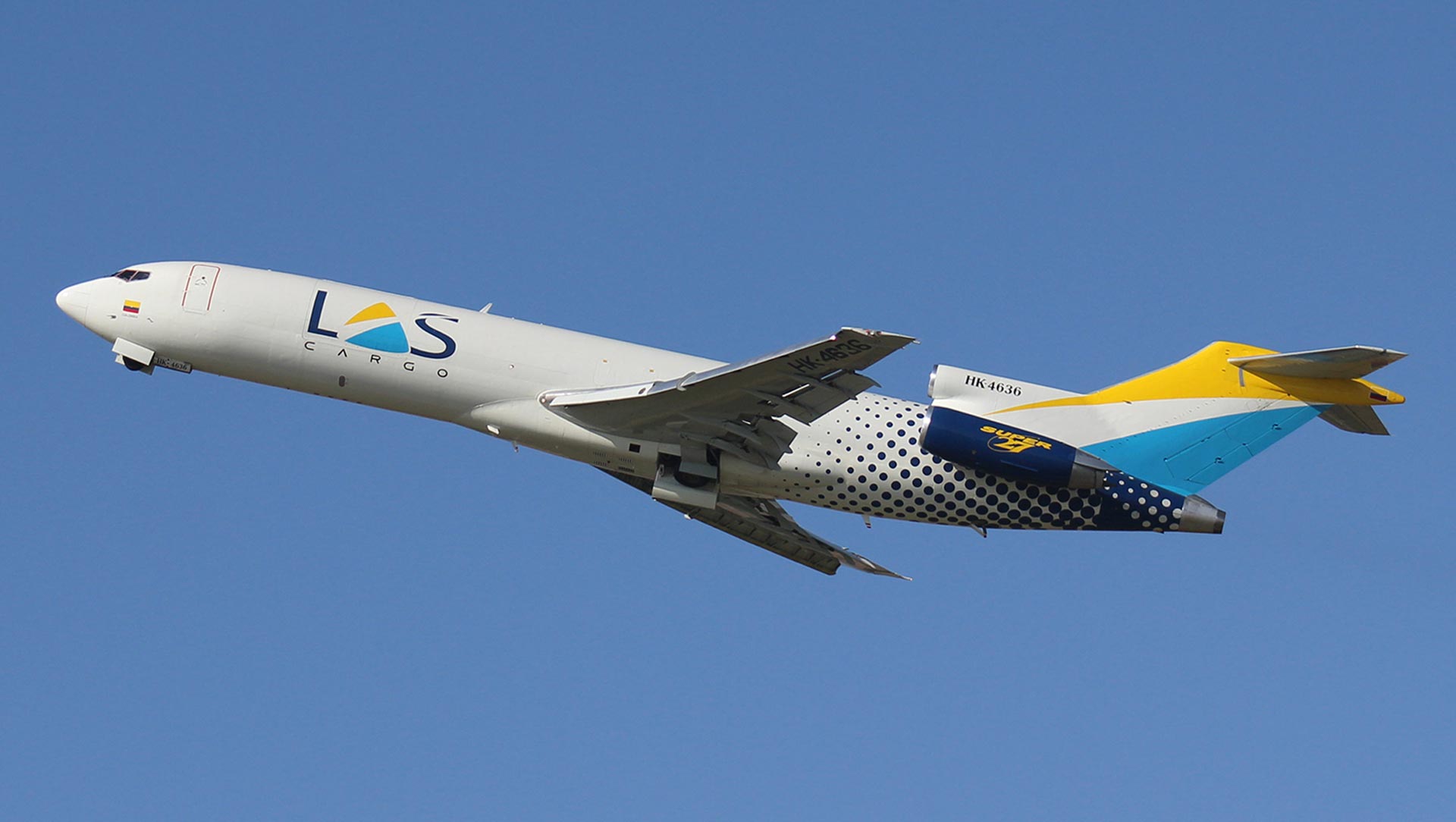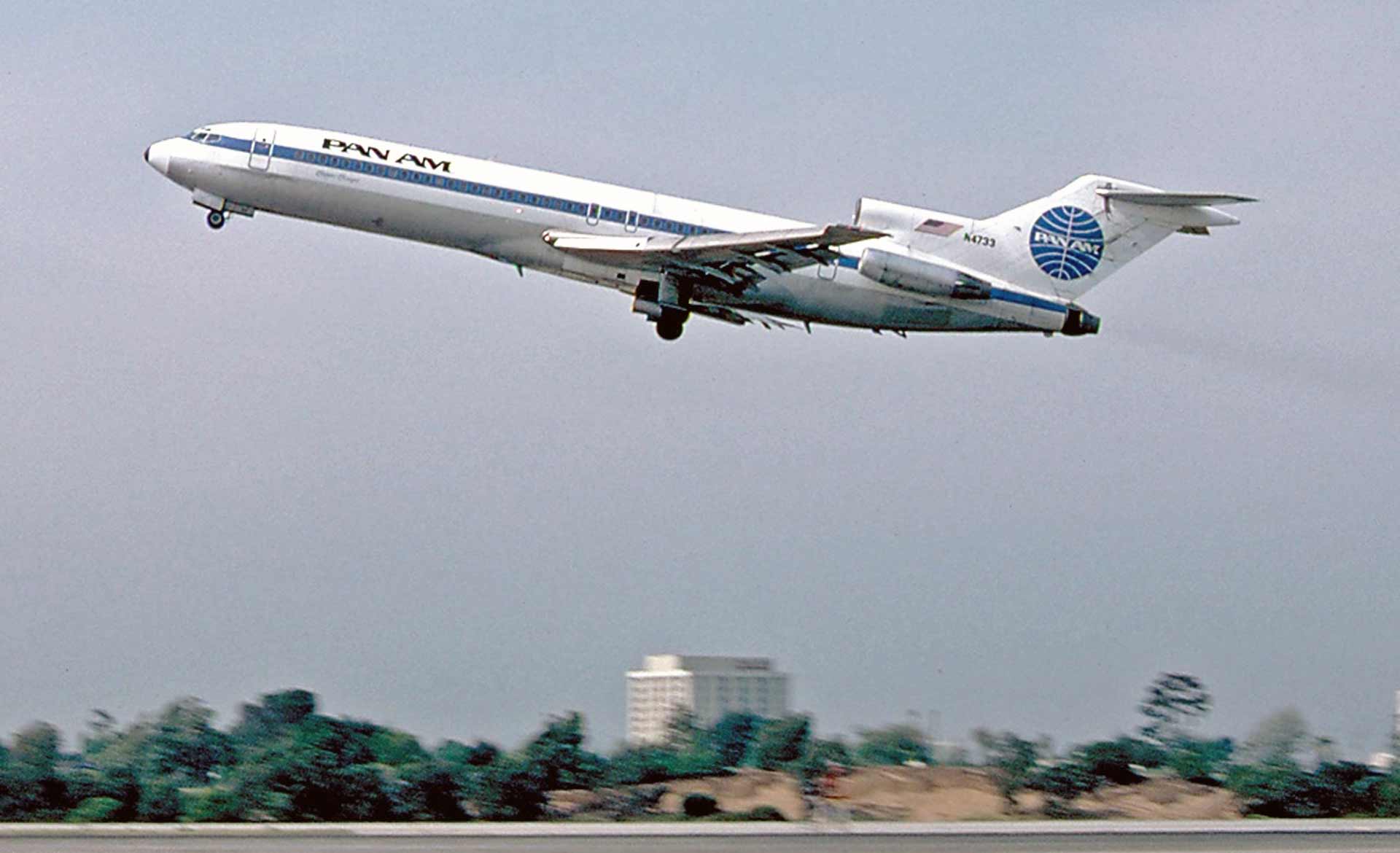
Rise to worldwide success
With the transition from propeller propulsion to jet engines, the airplane evolved in the 1960s from a luxurious means of transport to a means of mass transportation that made air travel affordable for many. The Boeing 727 helped usher in this change. In the second part of our portrait of the elegant three-engine aircraft, we report on how the 727 was able to prove itself successfully even under increasing pressure from competitor models and is still occasionally used in cargo traffic today.
The 727 was an absolute success for Boeing, but it became apparent early on that the impressive trijet would have a problem. Arch-competitor Douglas, at the time still the world's leading manufacturer of jetliners thanks to its DC-8, had developed the twin-engine DC-9 in Long Beach, California, in 1964. Initially much smaller, the stretched -30 series for 119 passengers, launched just one year later, was to develop into a serious competitor model because it was significantly more economical. While the 707 had now overtaken the DC-8 in the long-haul segment, the opposite situation was threatening to develop in the short- and medium-haul segment. Boeing subsequently came under pressure from its customers, namely United and Lufthansa, to offer something to counter the DC-9. This was not possible with the 727-100; a completely new model was needed.
The solution was the twin-engine 737 in 1968, which was aimed precisely at the DC-9 market. In fact, Boeing had a completely different idea for the 727, namely by following the aviation boom of the 1960s and developing the 727 massively upwards in terms of capacity.
The robust construction of the 727 made it possible to lengthen the aircraft by no less than a significant 6.1 meters, which meant an increase in capacity by 58 to a maximum of 189 seats. In addition, the performance of the new 727-200 matched that of the -100, albeit at significantly lower seating costs. In the USA, besides Northeast, it was initially the usual “trunks” such as United, American, and Eastern that ordered the -200. In Europe, however, Boeing initially only gained one new customer, Air France.

In 1968, Air France was the first in Europe to introduce the 727-200 and kept up to 29 -228 and -228Adv. in service until 1992.
Photo: Pedro Aragao_CC
The extension to the -200 was a good idea in itself, but customers were not satisfied. The problem was the performance of the -200, namely payload and range. They were still an unsatisfactory 2,000 kilometers at full payload. In addition, the climb performance of the -100 could not nearly be matched, which meant that the -200 had no chance in South America. In Mexico, however, the most important customer, the airline Mexicana, had developed a remarkable solution: With four launch rockets, their 727-200s were able to take off from high-altitude airports in Mexico even when it was very hot. But this solution was generally unsatisfactory, and so Boeing felt compelled to find a better operational solution. It was called “Advanced”, or simply -B, and was first launched by Lufthansa in 1973.

In spring 1973, Lufthansa introduced the world's first 727-200B “Advanced” with significantly improved performance. The 200th Boeing jet, the D-ABKI “Bremerhaven”, was accepted at the same time.
Photo: Lufthansa
Advantaged by the oil crisis
The “Advanced” had a number of improvements in store for customers. New, significantly more powerful PW JT8D-15 series engines with a thrust of 69 kN, larger fuel tanks, a new “wide body look” interior and a number of detail improvements added up to a step up to a new performance category, the significance of which really manifested itself rather by chance. The year 1973 marked the outbreak of the first so-called oil crisis, caused by a new price cartel called OPEC, with which its members finally freed themselves from the dictates of the consumer countries, namely the USA, Western Europe and East Asia. Extreme price increases for oil products were the result, which in the aviation industry swept the first generation of jet airplanes of the 1950s off the market practically from one day to the next. This mainly affected the early series of the Boeing 707, the Douglas DC-8 and the Convair 880/990. The only alternative was the 727-200 Advanced, and its sales figures promptly shot up.

From 1972, the Spanish airline Iberia operated 37 Boeing 727-256Bs, making it one of the most important operators in Europe. It was not until 2002 that the airline retired its last 727 after 30 years.
Photo: Iberia
Boeing was grateful for orders from circles previously beyond its traditional clientele. In Europe, for example, it was the classic Douglas customers such as Iberia and Alitalia, as well as Air Canada and finally Pan Am in North America, who were instrumental in the continued success of the 727. In the end, Boeing discovered the growing express freight market and began to court the large so-called “integrators”, especially after interest from previous customers began to wane at the beginning of the 1980s. The canvassers were successful to a certain degree, Federal Express, FedEx for short, becoming the one and only airline to bite, ordering 15 of the -200F. The -200F could carry a respectable payload of 24 tons, but even the new JT8D-15 turbofans were too loud for the times, and the necessary three-man cockpit crew too expensive. In addition, the unit price had risen to 34 million US dollars.

The US integrator Federal Express was the only one to order the 727-200F ex works. Production of the 727 ended on September 18, 1984 with Fed Ex’s 15th and last aircraft after 1,832 units.
Photo: BMMR_CC
Deployment over three decades
But the fans, who often included the supposedly cool-headed managers of many airlines, did not give up. The major operators kept the 727 in service until well into the 1990s. The last passenger 727 was not retired until 2019, and the last freighters are still in service today. This was only possible with massive technical modifications. For example, the integrator UPS operated its numerous 727-22QC “Quiet Freighters” taken over from United with modern Rolls-Royce “Tay” turbofans. Alternative engines were also offered for the -200 because the type certificate for the “Stage II” noise classification expired at the end of the 1990s. A so-called “Super 27” from Valsan with significantly improved all-round characteristics was produced once again, but only 54 conversion kits could be sold.

The Colombian company LAS Cargo from Bogota operated three Valsan Super 27 freighters until 2021. In the meantime, the ravages of time have nibbled away at even modernized 727s, so that only very few examples with low flight hours are still in service.
Photo: LASoficial_CC
What remains is the memory of an aircraft that was flown “with passion by the seat of your pants”, which is of course pure nostalgia, but shows the great love and trust that both crews and passengers placed in the 727 over 30 years. The fact that this passion sometimes even extended to the boardrooms of major airlines may show its true significance. It was not the only time that Boeing succeeded in turning a collection of components and materials into a literally living piece of technology.

Pan American's fleet policy was closely linked to Boeing, and so the 727 was an integral part of its great history, which came to such a sad end in 1991. This does not apply to Boeing, even if the manufacturer is now confronted with problems that were previously unthinkable.
Photo: Ted Quakenbush_GNU
Herpa is once again honoring the famous “Three Howler” from Boeing and will release several variants of one of the best commercial aircraft of all time in 2024. The 727 is perhaps similar to the famous Volkswagen Beetle. Everything that came after it was technically better in every respect. Only one thing was missing from all successors, namely soul. Whatever that is, the Boeing 727 certainly had it.

A 727-200RE - the last of its kind currently in service with the UK’s Oil Spill Response, which combats environmental damage caused by oil spills from large ships. This is done by spraying chemical substances over oil slicks, for example.
Photo: Oren Rozzen_CC
A total of 571 Boeing 727-100s and 1,260 -200s were produced, making a total of 1,831 aircraft. What was a sales record in 1984 looks quite modest compared to the sales figures of modern 737s or Airbus A320s. However, the market conditions of the late 20th century were decidedly different, and air travel was completely different in significance. The Boeing 727 was representative of an industry on the upswing - by no means spared from crises, but steadfastly on its way up. This is still true today, but the 727 has long since become a relic with an honored place in history.
Text: Fritz Gratenau
Titelbild: Ken Fielding_CC
Facts and figures
Manufacturer: The Boeing Company, Seattle/Wa., USA
Type: 727-0
Powerplant: 3 x PW JT8D-1
Power: 3 x 62 kN
Cruising speed: 930 km/h
Max. take-off weight: 58,950 kg
Range: 2,000 km at max. load
Max. Capacity: 131 seats / 22 tons of Cargo
Price: US-$ 4.7 Mio. (1963)
Produced: 571







